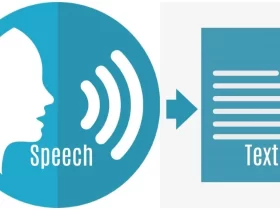The beauty of Fused Deposition Modeling (FDM) 3D printing lies not only in the intricate designs you can create but also in the diverse range of materials you can use to bring them to life. The choice of 3D printer filament is a critical decision that directly impacts the strength, flexibility, appearance, and overall functionality of your printed object. With a plethora of options available, understanding the properties of different filaments is essential for achieving the desired results. This article will delve into some of the most popular FDM filaments, highlighting their pros, cons, and typical applications to help you choose the right material for your next project.
PLA (Polylactic Acid): The Everyday Hero
Polylactic Acid, or PLA, is often the first filament that beginners encounter, and for good reason. It’s derived from renewable resources like cornstarch or sugarcane, making it a more environmentally friendly option compared to some other plastics. PLA is known for its ease of printing, requiring relatively low temperatures and exhibiting minimal warping. It produces prints with a good surface finish and is available in a vast spectrum of vibrant colors.
- Pros: Beginner-friendly, easy to print, low warping, good detail reproduction, wide color availability, relatively low odor.
- Cons: Lower strength and temperature resistance compared to other filaments, can become brittle over time, not ideal for functional parts subjected to significant stress or heat.
- Common Applications: Decorative prints, figurines, prototypes for visual assessment, educational projects, non-functional models.
ABS (Acrylonitrile Butadiene Styrene): Strength and Durability
Acrylonitrile Butadiene Styrene, or ABS, is a popular choice for creating functional parts that require strength and durability. It boasts higher impact resistance and temperature resistance than PLA, making it suitable for objects that might experience some stress or be used in warmer environments. You’ll find ABS in many everyday items, from LEGO bricks to car bumpers.
- Pros: Strong, durable, good impact resistance, higher temperature resistance than PLA, can be easily sanded and painted.
- Cons: More prone to warping, requires higher printing temperatures and often a heated build platform, emits fumes during printing that can be unpleasant and potentially harmful, requires good ventilation.
- Common Applications: Mechanical parts, gears, enclosures, automotive components, parts that need to withstand some wear and tear.
PETG (Polyethylene Terephthalate Glycol): The Versatile Middle Ground
Polyethylene Terephthalate Glycol, or PETG, is gaining popularity as a versatile filament that often bridges the gap between PLA and ABS. It offers a good balance of strength, flexibility, and ease of printing. PETG is more durable and impact-resistant than PLA and less prone to warping than ABS, making it a compelling option for a wide range of applications. It also exhibits good chemical resistance.
- Pros: Stronger and more flexible than PLA, good impact and chemical resistance, relatively easy to print (though may require slightly higher temperatures than PLA), less warping than ABS, often considered food-safe (check specific grades).
- Cons: Can be more prone to stringing than PLA, may require specific bed adhesion methods.
- Common Applications: Functional parts, robot components, protective cases, bottles and containers (food-safe grades), parts that need to withstand some stress and outdoor use.
Beyond the Basics: Exploring Specialty Filaments
Once you’ve become comfortable with the more common filaments, you can venture into the exciting world of specialty materials. Thermoplastic Polyurethane (TPU) and Thermoplastic Elastomer (TPE) offer flexibility and elasticity, perfect for creating phone cases or flexible joints. Nylon (Polyamide) boasts exceptional strength and abrasion resistance, ideal for gears and bearings. For prints requiring added strength and stiffness, consider carbon fiber-infused filaments. And for a unique aesthetic, metal-infused filaments can give your prints a metallic look and feel. The right 3D printer filament ultimately depends on the specific requirements of your project.
Key Considerations When Choosing Your Filament
When faced with the myriad of filament options, consider the following questions to guide your decision:
- What will the printed object be used for? (Decorative, functional, load-bearing, etc.)
- What level of strength and durability is required?
- Will the object be exposed to high temperatures or chemicals?
- Does the object need to be flexible or rigid?
- What are the aesthetic requirements? (Color, finish, etc.)
- What are the capabilities of your 3D printer? (Maximum nozzle temperature, heated bed requirements, etc.)
Conclusion
Choosing the right 3D printer filament is a crucial step in achieving successful and functional 3D prints. By understanding the unique properties and characteristics of different materials like PLA, ABS, PETG, and a variety of specialty options, you can make informed decisions that will lead to better results. Don’t be afraid to experiment with different filaments to discover what works best for your specific needs and to unlock the full potential of your FDM 3D printer.






